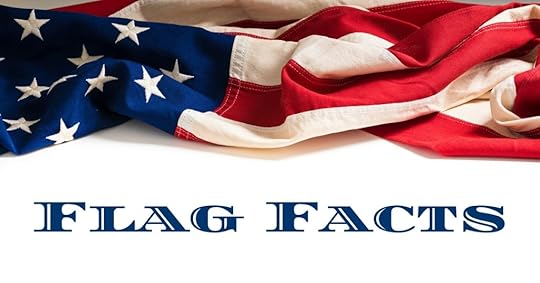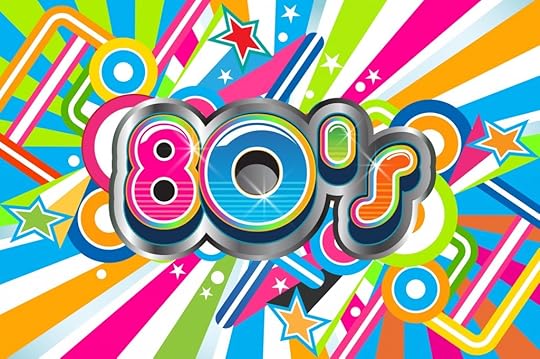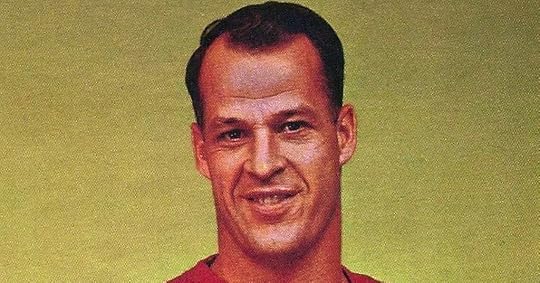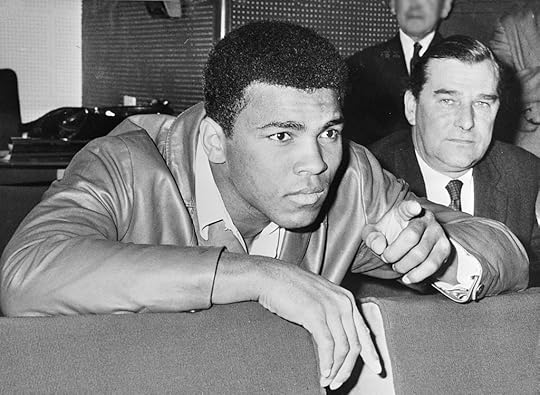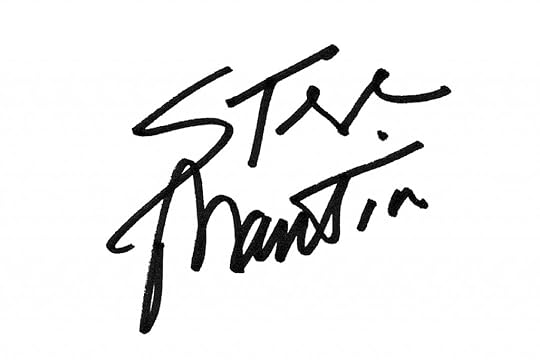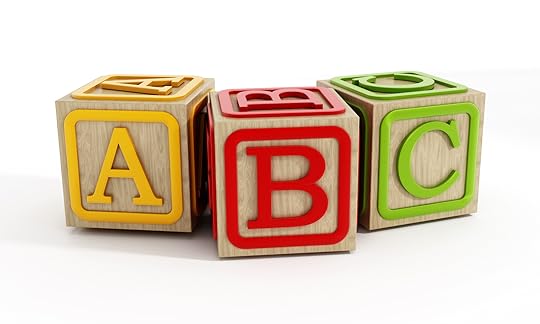Bathroom Readers' Institute's Blog, page 82
June 15, 2016
9 Bands Named After Books
Rock bands get their name from all kinds of places—even books. (By the way, “Uncle John” is still available, should any of you aspiring musicians need a moniker.)
Veruca Salt
This ‘90s alternative rock band (best known for “Seether”) is named after the snotty, spoiled girl who wins one of the Golden Tickets to visit Willy Wonka’s factory in Roald Dahl’s Charlie and the Chocolate Factory.
Manhattan Transfer
The ‘70s vocal group had a huge hit with “The Boy From New York City.” They’re thoroughly New York, down to their name—Manhattan Transfer is a 1925 novel by American writer John Dos Passos.
My Chemical Romance
Bass player Mikey Way was actually working at a bookstore when he picked up Ecstasy: Three Tales of Chemical Romance, a book by Trainspotting author Irvine Welsh. His brother and bandmate Gerard Way suggested adding the “my” to the “chemical romance.”
Lisa Loeb and Nine Stories
The singer-songwriter named her backing band after a 1953 J.D. Salinger collection.
The Doors
English poet William Blake wrote the lines, “If the doors of perception were cleansed every thing would appear to man as it is, Infinite.” That inspired the title of Aldous Huxley’s The Doors of Perception, which in turn inspired the name of Jim Morrison’s psychedelic band.
Steppenwolf
The band had originally called itself the Sparrow, but changed it in 1968 on the suggestion of their producer Gabriel Mekler, who had just finished reading Herman Hesse’s Steppenwolf.
Marillion
Initially Silmarillion, after Lord of the Rings author J.R.R. Tolkein’s The Silmarillion, the progressive rock band shortened it because it feared getting sued by Tolkein’s estate for copyright infringement.
Silverchair
The Australian band (“Tomorrow”) is named for The Silver Chair, one of the books in C.S. Lewis’s The Chronicles of Narnia.
Sixpence None the Richer
This Christian rock band had a huge pop hit in 1999 with “Kiss Me.” They also got their name from C.S. Lewis. It’s a paraphrase of a passage from Mere Christianity.
The post appeared first on Trivia Books and Facts | Uncle John's Bathroom Reader.
June 14, 2016
7 Grand Old Flag Facts for Flag Day
Some trivia about the good ol’ red, white, and blue.
The federal government has on hand three potential flag designs should there ever be a 51st state. A leading candidate to be state #51: Puerto Rico, and so the New Progressive Party of Puerto Rico commissioned one of those designs. Instead of rows of stars, the stars are arranged in a circle with lines down the middle, forming five separate “pie” pieces.
American astronauts have left six flags on the moon. Five of them are still upright. The sixth was blown down by the exhaust from Apollo 11 in 1969 during its liftoff.
Any time a new state has joined the United States, it’s necessitated a new flag design—each star represents a state. As the country grew from 13 states to 50, there have been 28 official U.S. flags along the way.
Longest official flag in use: the one with 50 stars, adopted in 1960 after Hawaii became a state.
“The Star-Spangled Banner” isn’t just a nickname for the American flag in general—it’s a specific flag. It refers to the one used from 1795 to 1818, flown during the War of 1812, which inspired Francis Scott Key to write “The Star-Spangled Banner.” There are three rows of three stars each, alternating with three rows of two stars each. (That makes…15 states!)
When a new flag is adopted, it’s unveiled in the year after the admission of new states to the union. But it’s not done on Flag Day. Since 1818, new flags are unveiled (literally) on Independence Day.
In 1889, one of the bestselling flags in the country was a 39-star design. However, the U.S. never had exactly 39 states—there were 38 and then 40. That year, North Dakota and South Dakota were admitted to the union, but it was widely assumed up until the moment of statehood that the Dakota Territory would join as a single state.
The post 7 Grand Old Flag Facts for Flag Day appeared first on Trivia Books and Facts | Uncle John's Bathroom Reader.
June 13, 2016
6 Weird Baseball Records
Maybe one of these will fall this year.
Most strikeouts in a dome
This kind of record obviously favors modern-day pitchers, but Randy Johnson still has an overwhelming lead. He’s retired 2,279 batters in ballparks with roofs, more than the second- and third-place pitchers (Nolan Ryan’s 1,123 and Brad Radke’s 943) combined.
Most foul balls
In a game in 1940, Chicago White Sox shortstop Luke Appling hit 24 pitches into foul territory in a single plate appearance. He eventually managed to earn a walk.
Most double plays forced
Cal Ripken Jr. famously played in a record 2,632 straight games. During that time he also hit into 350 double plays, also a record.
Most home runs while striking out the least
Power hitters swing for the fences. That means the players with the big home run totals are also among the batters who strike out the most. Hall of Famer Reggie Jackson, for example, hit 563 home runs in his career…while also striking out 2,597 times. That’s why Johnny Mize’s feat is so remarkable. For the New York Giants in 1947, he hit 51 home runs and struck out just 42 times. It’s the only occurrence of a player hitting more than 50 home runs but striking out less than 50 times.
Least involvement
Toby Harrah of the Texas Rangers played shortstop in two games of a double header in June 1976. Amazingly, in 18 innings of infield play, he didn’t touch the ball a single time. This level of inactivity has never happened before or since.
Most times caught stealing in a game
The San Francisco Giants’ rookie Robby Thompson really wanted to make a name for himself as a base stealer in 1986. In the 149 games he played that season, he stole 12 bases…and was caught 15 times. Amazingly, in one June 1986 game he tried to steal a base four times. He got thrown out all four times.
The post 6 Weird Baseball Records appeared first on Trivia Books and Facts | Uncle John's Bathroom Reader.
June 10, 2016
Like, Totally ’80s Fads
Uncle John sure looked rad as he drove his DeLorean to the Wham! concert, wearing his single white glove and brand new Members Only jacket with the collar turned up.
SWATCH WATCHES
In 1983 Switzerland’s two biggest watchmakers were on the verge of bankruptcy because of competition from cheap Japanese watches. The companies decided to merge, and they needed to come up with a big new idea…quick. Their idea: the Swatch (short for “second watch”)—a brightly colored, casual watch available in a variety of patterns to match the wearer’s outfits. Swatches weren’t cheap: They cost over $30, a lot for a plastic watch that you’ll have to throw away eventually (one of the “features” was that there were no serviceable parts). Still, they were a hit. Teenagers, many of whom wore two or more Swatches at once, bought over 3 million in the first two years and over 100 million by the end of the 1980s.
LASER TAG
 George Carter got the inspiration while watching Star Wars in 1977. It took him years to work out the technology, but in 1984, he opened Photon, a laser tag arcade in Dallas, Texas. Played in a futuristic, cavernous arena, Photon let players shoot light beams at each other while climbing on catwalks surrounded by smoke, lights, and sound effects. Receptors on the players’ chests recorded “hits”; three hits eliminated a player from the half-hour match. Laser tag became a local phenomenon, and soon Photon arenas sprang up all over the United States. They were riding high when a
George Carter got the inspiration while watching Star Wars in 1977. It took him years to work out the technology, but in 1984, he opened Photon, a laser tag arcade in Dallas, Texas. Played in a futuristic, cavernous arena, Photon let players shoot light beams at each other while climbing on catwalks surrounded by smoke, lights, and sound effects. Receptors on the players’ chests recorded “hits”; three hits eliminated a player from the half-hour match. Laser tag became a local phenomenon, and soon Photon arenas sprang up all over the United States. They were riding high when a  home version of their game hit stores in 1985. Then came the competition. Worlds of Wonder—the company responsible for the Teddy Ruxpin doll—released Lazer Tag, a rip-off of the Photon set that sold better than Photon. Nearly 20 other competitors followed… and they all flopped, except for Lazer Tag, which became the hot toy for Christmas 1986. Only problem: Worlds of Wonder couldn’t make Lazer Tag sets fast enough to keep up with demand.
home version of their game hit stores in 1985. Then came the competition. Worlds of Wonder—the company responsible for the Teddy Ruxpin doll—released Lazer Tag, a rip-off of the Photon set that sold better than Photon. Nearly 20 other competitors followed… and they all flopped, except for Lazer Tag, which became the hot toy for Christmas 1986. Only problem: Worlds of Wonder couldn’t make Lazer Tag sets fast enough to keep up with demand.
By the time the company ramped up production, kids had moved on to the next thing. The fad was over, and Worlds of Wonder went bankrupt in 1988. The Photon chain closed in 1989.
GARBAGE PAIL KIDS
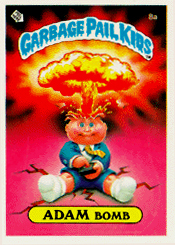 In the 1970s, the Topps Company made Wacky Packages, trading cards featuring takeoffs on well-known consumer products (example: “Boo-Hoo” and “Cap’n Crud” instead of Yoo-Hoo and Cap’n Crunch). In 1985 they hired comic-book artist Art Spiegel man to revive the series, and he came up with “Garbage Pail Kids,” a parody of the massively popular Cabbage Patch Kids dolls. Each card depicted a character doing something disgusting (Heavin’ Steven was a vomiting baby; Fryin’ Brian was a boy getting shocked in an electric chair). Topps liked the cards so much that they made it a separate line. They were gross, revolting…and a smash hit. Topps sold more than 200 million packs. But parents objected to the dark subject matter, and, because of the complaints, a planned cartoon series never aired and a 1987 movie bombed. When Coleco, makers of the Cabbage Patch Kids, sued Topps for copyright infringement in 1988, that slammed the lid on the garbage pail. By the time the two companies settled the suit later that year, sales had dwindled so low that the cards went out of print. (Fun fact: Art Spiegelman also wrote the Pulitzer Prize–winning graphic novel Maus.)
In the 1970s, the Topps Company made Wacky Packages, trading cards featuring takeoffs on well-known consumer products (example: “Boo-Hoo” and “Cap’n Crud” instead of Yoo-Hoo and Cap’n Crunch). In 1985 they hired comic-book artist Art Spiegel man to revive the series, and he came up with “Garbage Pail Kids,” a parody of the massively popular Cabbage Patch Kids dolls. Each card depicted a character doing something disgusting (Heavin’ Steven was a vomiting baby; Fryin’ Brian was a boy getting shocked in an electric chair). Topps liked the cards so much that they made it a separate line. They were gross, revolting…and a smash hit. Topps sold more than 200 million packs. But parents objected to the dark subject matter, and, because of the complaints, a planned cartoon series never aired and a 1987 movie bombed. When Coleco, makers of the Cabbage Patch Kids, sued Topps for copyright infringement in 1988, that slammed the lid on the garbage pail. By the time the two companies settled the suit later that year, sales had dwindled so low that the cards went out of print. (Fun fact: Art Spiegelman also wrote the Pulitzer Prize–winning graphic novel Maus.)
FANNY PACKS
Based on a clip-on utility pouch worn by soldiers, fanny packs were first sold to the general public at camping-supply stores in the 1960s. By the early 1980s, they had caught on with Norwegian tourists, who wore them in the United States to keep their valuables safe (they thought America was full of pickpockets). The packs’ popularity grew until they were the fad of 1988—Adweek called the fanny pack “the hottest product of the year”—and the pouches were suddenly everywhere. There were $2 nylon packs with pictures of the Teenage Mutant Ninja Turtles on them for kids, Day-Glo packs for teenagers, and even $200-plus leather models. By the early 1990s, fanny packs, along with most other 1980s fashions, were passé. (But they remain popular with tourists.)
OTHER 1980s FADS:
Rubik’s Cube, the Walkman, Miami Vice, Chia Pets, Trivial Pursuit, leg warmers, Monchichis, calculator watches, acid-wash jeans, Max Headroom, the California Raisins, Pogo Balls, the Noid, Hulkamania, aviator shades, break dancing, He-Man, hair crimping, bare midriffs for men, Trapper Keepers, Lee Press-On Nails, jelly shoes, and Big League Chew.
The post Like, Totally ’80s Fads appeared first on Trivia Books and Facts | Uncle John's Bathroom Reader.
R.I.P., Gordie Howe
“Mr. Hockey” has passed away at the age of 88. Here are a few stories about one of the greatest hockey players to ever take the ice.
Gordie Howe Hat Trick
Howe was as frequent a brawler as he was a scorer—he started a lot of fights on the ice. There’s an unofficial hockey accomplishment called the “Gordie Howe Hat Trick.” While a regular hat trick is three goals in one game, the Howe version indicates a player scored a goal, got an assist, and got in a fight all in the same game. (Howe himself only actually got two Gordie Howe hat tricks, one in October 1953 and the other five months later.)
Durable Athlete
Hockey players are some of the most durable athletes in professional sports. None more so than Howe. He entered the NHL as an 18-year-old in 1946 and retired in 1971—a span of 25 seasons. He was elected to the Hockey Hall of Fame in 1972…and then returned to the pros, lacing up for the Houston Aeros of the newly formed World Hockey Association. He stayed with the WHA through the 1980 season, which by then had been absorbed by the NHL.
Six Decades of Hockey
Howe was the only hockey player to compete in five separate decades, but he added a sixth in 1997. He played one game for the Detroit Vipers of the International Hockey League in 1997. Howe was 69 at the time.
Mr. Everything
Most widely known by the nickname “Mr. Hockey,” Howe may also hold the unofficial NHL record for “most nicknames.” In addition to “Mr. Hockey” (which he trademarked), he was called “Mr. Elbows,” “Mr. Everything,” “Mr. All-Star” (he played in 23 all-star games), “The Most,” “The Great Gordie,” and “The Legend,” and “The King of Hockey.”
“Gordon” on The Simpsons
Younger readers might know Gordie Howe best as a punchline on The Simpsons. On a 1992 episode, Bart Simpson gets revenge on his teacher for giving him detention by wooing her via love letters (and then breaking up with her). Bart says they’re from “Gordon,” and gives her a picture he cuts out of a hockey trivia book. Some of The Simpsons writers wanted to use Johnny Unitas for the bit, but couldn’t secure the rights. Writer Al Jean suggested Howe, because he was a big fan growing up. At the end of the episode, some of Howe’s statistics flash up on the screen, added in because the running time was a few seconds too short.
The Gordie Howe Story
How many hockey players get a made-for-TV movie based on their lives? In 2013, Mr. Hockey: The Gordie Howe Story aired on the CBC in Canada and the Hallmark Channel in the U.S.
The post R.I.P., Gordie Howe appeared first on Trivia Books and Facts | Uncle John's Bathroom Reader.
June 6, 2016
A Time-Traveler Roundup
It’s a bizarre Internet phenomenon: Old pictures or videos pop up, and somebody in them looks like they’re using modern-day technology. Are we just seeing things wrong…or are these time-travelers caught on camera?
If you could go back in time, what would you do? Warn people about coming tragedies? Invest in the stock market? Or go see some random boxing match in 1995? Apparently that’s what one “time traveler” did. While watching old video of Tyson’s match against Peter McNeeley in 2016, a YouTube user spotted a man sitting ringside who appears to be taping the fight on a smartphone…which weren’t really a thing until the introduction of the iPhone in 2007. It does look a lot like an iPhone. Is it a time traveler with a smartphone? Nope. It’s most likely a digital camera. They were new to the market in 1995, and the one in the Tyson video resembles one of several made by Casio.
Not until 2010 did someone notice a time traveler in footage of the Hollywood premiere of Charlie Chaplin’s 1928 film The Circus. Included on a DVD of the movie is newsreel coverage of fans gathered for the event at Grauman’s Chinese Theatre. A woman walks by and holds a thin, black object up to her ear: It’s, “of course” a cell phone…and the woman is from the future. Filmmaker George Clarke uploaded the video to YouTube, and posited the time traveler theory. But others weighed in with a more likely idea: It’s a portable hearing aid, one of the first on the market, and developed by a company called Acousticon.
In 2010, the Virtual Museum of Canada launched an online exhibit called “Their Past Lives Here.” Included was a 1941 photograph of people gathered to witness the re-opening of the South Fork Bridge in British Columbia. Among the attendees: a man who looks like he stepped right out of 2010, complete with sunglasses, TV shirt, and modern-day hairstyle. But things are not always what they seem. Closer analysis found that the man’s sunglasses dated to the 1920s (sunglasses just weren’t very popular in the ‘40s), and he wasn’t wearing a T-shirt, but a sweater with a sewn-on emblem.
The post A Time-Traveler Roundup appeared first on Trivia Books and Facts | Uncle John's Bathroom Reader.
The Pop Culture Legacy of Muhammad Ali
Muhammad Ali was a towering presence in sports and society. As a boxer he was “The Greatest,” and was equally well known as a social crusader and activist. The world loved Ali, and he crossed over into pop culture a number of times.
The Greatest
More than two decades before Will Smith was nominated for an Academy Award for his portrayal of Muhammad Ali in the 2001 film Ali, there was the 1977 film The Greatest. It depicted Ali’s life from his gold-medal-winning turn in the 1960 Olympics to his 1974 heavyweight title fight against George Foreman—the “Rumble in the Jungle.” Ali was such a charismatic figure that only one man at the time was capable of portraying him onscreen: Ali himself. The Greatest also introduced the song “The Greatest Love of All.” Later a huge hit for Whitney Houston, it was first performed here—explicitly about Ali—by George Benson.
I Am the Greatest
Also in 1977, NBC aired a Saturday morning cartoon in which Ali voiced an animated version of himself. It’s the first cartoon ever based around a real-life pro athlete. It’s also the first cartoon where a main character is a public relations agent. Ali’s real PR man, Frank Bannister, provided the voice of the animated Frank Bannister. The cartoon itself was standard cheesy cartoon fare. Episode titles of the 13-episode series include “The Werewolf of Devil’s Creek,” “The Great Alligator,” and “Terror in the Deep.”
Ali and His Gang Vs. Mr. Tooth Decay
For this bizarre 1976 storybook record, Ali recruited famous friends like Frank Sinatra and Howard Cosell. The goal: to get kids to eat less sugar, and to brush their teeth. The consequences of not doing so were anthropomorphized on the record as a Russian-accented monster named Mr. Tooth Decay (and his sidekick “Sugar Cuba”). It was nominated for a Grammy for Children’s Comedy Record and led to a sequel in which Ali and President Jimmy Carter urged kids to not do drugs.
The post The Pop Culture Legacy of Muhammad Ali appeared first on Trivia Books and Facts | Uncle John's Bathroom Reader.
June 3, 2016
Songs that Changed the World
Songs that made the whole world sing…or at least sit up and take notice.
The Song: “Do They Know It’s Christmas?”
Recorded by: Band Aid
Story: In November 1984, Irish rock musician Bob Geldof of the Boomtown Rats saw a TV news report about the millions of people suffering from a famine in Ethiopia. He wanted to do something about it—fast. With Midge Ure of the band Ultravox, Geldof wrote “Do They Know It’s Christmas?,” depicting the stark contrast between the “first world” and the “third world.” Then he recruited more than 30 British pop stars (including members of U2, Culture Club, and Duran Duran), and recorded and released the song before the end of November, just in time for Christmas. In just a month, the song (credited to “Band Aid”) raised over $3 million.
The Song: “Happy Birthday”
Recorded by: Stevie Wonder
Story: After Martin Luther King, Jr. was assassinated in 1968, Michigan congressman John Conyers introduced a bill to make King’s birthday a national holiday. It failed. Labor unions continued to promote the idea throughout the 1970s, but it didn’t gain mainstream support until Stevie Wonder released “Happy Birthday” in 1980. Wonder dedicated the song to King, with lyrics explicitly advocating a formal holiday in his honor. The hit record generated new interest, which led to a petition signed by six million Americans, which in turn led to new legislation. On November 2, 1983, President Ronald Reagan signed the bill, making Martin Luther King, Jr. Day a federal holiday.
The Song: “We Are the World”
Recorded by: USA for Africa
Story: Like Bob Geldof, Harry Belafonte wanted to do something for Ethiopia. He started organizing a charity concert, but his manager, Ken Kragen, believed a charity record would generate more money. So Kragen persuaded Lionel Richie and Michael Jackson to write “We Are the World,” a song about how America, as the wealthiest country on Earth, has both the power and the responsibility to effect change. Quincy Jones, Stevie Wonder, Bruce Springsteen, Ray Charles, Bob Dylan, Tina Turner, and 40 other stars participated in the recording session. Columbia Records distributed the record for free. Released in March 1985, it became the #1 song in the United States and England within two weeks. It ultimately sold over 10 million copies and raised $50 million for famine relief.
The Song: “Helter Skelter”
Recorded by: The Beatles
Story: This song changed the world for the worse. Paul McCartney wrote “Helter Skelter” in 1967 after challenging himself to write something louder and noisier than the Who’s “I Can See for Miles.” According to McCartney, the song is about an amusement park ride. But mass murderer Charles Manson believed it contained secret messages about an upcoming race war, in the aftermath of which Manson would become the ruler of the world because he’d be the only white man left. Led by this delusion, Manson sent his followers on a killing spree in 1969. They brutally murdered seven people in Los Angeles and left the words “healter skelter” crudely scrawled (and misspelled) on one of the victims’ refrigerators.
The Song: “Strange Fruit”
Recorded by: Billie Holiday
Story: “Strange Fruit” is a stark condemnation of lynching written in 1937 by Abel Meeropol, a Bronx schoolteacher and social activist. Lyrics include “Southern trees bear a strange fruit / Blood on the leaves and blood at the root / Black bodies swinging in the southern breeze / Strange fruit hanging from the poplar trees.” Meeropol played the song at a 1939 union rally where it was heard by Barney Josephson, owner of Café Society, a New York night club, who gave the song to rising star Billie Holiday. “Strange Fruit” became her signature show-closing number, raising public awareness of the anti-lynching movement. According to many historians, “Strange Fruit” was a seed for what would evolve into the civil rights movement of the 1960s.
The post Songs that Changed the World appeared first on Trivia Books and Facts | Uncle John's Bathroom Reader.
June 2, 2016
3 Celebrities Who Give Way More Than an Autograph
Before the days of instant interaction via the Internet and social media, the way to tell a celebrity you liked their work was to write them a fan letter. In return, you might get a signed headshot and a form letter. Here are some celebrities, from then and now, with creative responses to fans.
Steve Martin
In the 1980s, Steve Martin sent out a response letter that was both a form reply and a mockery of form replies. An excerpt: “Too often performers lose contact with their audience and begin to take them for granted, but I don’t think that will ever happen to me, will it ________?” (In the blank went the writer’s name.) Martin’s letters also included a fill-in-the-blank postscript: “I’ll always cherish that afternoon we spent together in Rio, walking along the beach, looking at _______.”
Jonah Hill
Jonah Hill, star of Superbad and The Wolf of Wall Street, thinks signing autographs is a little bland and impersonal. Instead, when he’s approached by a fan he hands out a business card that reads “I just met Jonah Hill. It was a total letdown.”
John Cleese
Around the time when he starred on Fawlty Towers in the 1970s, John Cleese sent out a stock fan letter to fans, but it was a pretty good one. It read:
I am afraid I’m much too important to write notes to people like you. Please remember that I am very very very very very very important. I enclose a photograph to remind you of my importance.
The post 3 Celebrities Who Give Way More Than an Autograph appeared first on Trivia Books and Facts | Uncle John's Bathroom Reader.
Educational Toys
What kind of person would think you can learn and have fun at the same time? (Uh-oh—don’t tell Uncle John we said that.)
STACKING RINGS
Cornelius Holgate started a small family carpentry business outside Philadelphia in 1789. It thrived over the years, but in 1929, the Holgates finally found their niche: wooden toys. Child psychologist Lawrence Frank married into the Holgate family and convinced them to take the business that way. The most popular item: stacking rings—smooth, painted wooden rings that toddlers placed over a small wooden pole in order to learn motor skills. Stacking rings are still manufactured in wood by the Holgate Toy Company, as well as in plastic by Playskool and Fisher-Price, who introduced the popular Rock-a-Stack version in 1960.
SPEAK & SPELL
One of the earliest handheld electronic toys ever available, the Speak & Spell was introduced in 1978 by Texas Instruments, primarily a manufacturer of calculators. The candy-red toy with a kid-friendly handle on top would speak letters in a robotic voice as the child typed them out, helping the child recognize the letters and learn to read. It featured a small digital display screen, a speech synthesizer, and a standard QWERTY keyboard, so it also taught kids to type. It was part of a line that also included the Speak & Read and Speak & Math, which weren’t as successful.
The product got a major boost when E.T. used one to communicate with his Earth friends in E.T.: The Extra Terrestrial (1982), helping to fuel sales of more than 10 million Speak & Spells (in seven different languages) by 1992, when the toy was discontinued.
SEE ’N SAY
“The cow says…mooooo” is probably familiar if you had kids or were a kid in the last few decades. The See ’n Say was introduced by Mattel in 1965. Here’s how it works: There’s a spinning arrow in the middle of the round toy. The child points the arrow at a picture of an animal, then pulls the “chatty ring” (it’s now a lever) and a voice pronounces the name of the animal, followed by the noise it makes. See ’n Say is unique in that it operates mechanically, without batteries. A metal needle inside the toy plays tracks on a plastic disc, functioning much like an old fashioned gramophone record. Mattel engineers were inspired by the company’s popular 1950s toy Chatty Cathy, a doll that said different phrases at random. The See ’n Say was the first toy in which kids could choose exactly what would be heard.
LEAPFROG
San Francisco lawyer Michael Wood’s young son, Matthew, was having trouble putting sounds together to make words. So, with the help of Stanford professor Robert Calfee (and using the technology for talking greeting cards), he developed Phonics Desk, an interactive toy designed to teach children how to pronounce words. It came out in 1995, and LeapFrog Enterprises was founded. In 1999 the company introduced LeapPad interactive books, which allow children to touch letters with a stylus in order to hear them pronounced. By 2002 almost nine million LeapPads were sold, making it the first educational toy to become a bestseller in the United States since the 1980s.
ALPHABET BLOCKS
Wooden blocks were first suggested as an educational tool in 1693, when English philosopher John Locke wrote that “dice and playthings with the letters on them to teach children the alphabet by playing” would help make learning more enjoyable. But it wasn’t until the early 1800s that such toys became widely available. That’s when New York teacher J.E. Wickham began selling sets of blocks covered in colored paper engraved with words and pictures. In 1820 the S.L. Hill Company of Williamsburg, New York, took out a patent on wooden blocks embossed with the alphabet, commonly called “alphabet blocks.” They’re now one of only 46 toys in the National Toy Hall of Fame.
The post Educational Toys appeared first on Trivia Books and Facts | Uncle John's Bathroom Reader.



